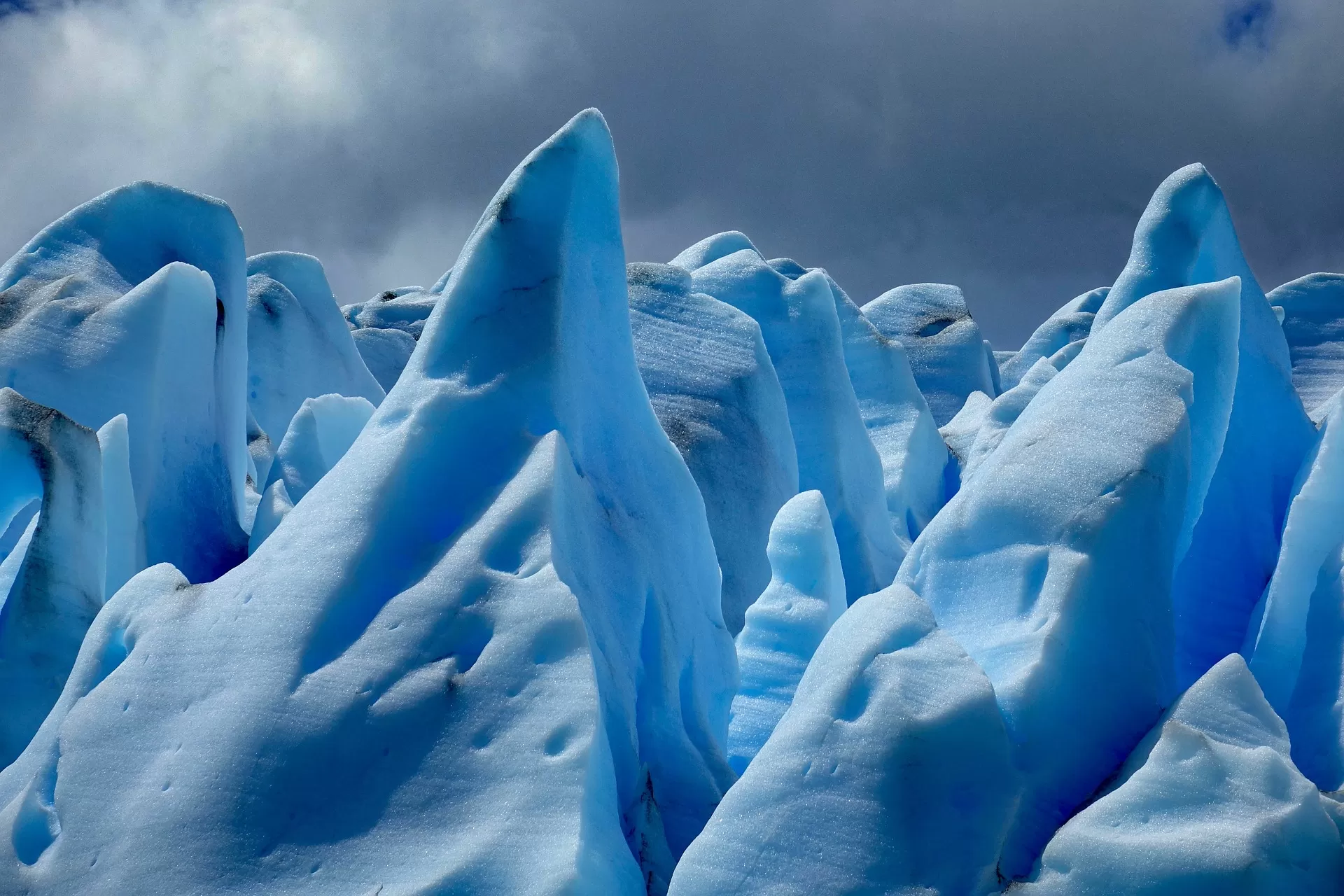
Image Credit : Image by Horst Engelmann from pixabay (free license)
Grey Glacier is a glacier in the Southern Patagonian Ice Field, just west of the Cordillera del Paine. It flows southward into the lake of the same name. Before dividing in two at its front end, the glacier is 6 kilometers wide and over 30 meters high. In 1996, it occupied a total area of 270 km
2 (100 sq mi) and a length of 28 km (17 mi). In November 2017 a large iceberg broke off the glacier.
Torres del Paine National Park, Patagonia, Chile - Coordinates: 50.9423
o S, 73.4068
o W
The glacier is at the south end of the Southern Patagonia Ice Field. The surface of the lake can be seen when following the big circuit of Paine Mountain Range at John Garner Pass. There is another view of the glacier from the south shore of the lake where the glacier can be seen in the background, with fragments of ice floating close to the shore. It is located to the west side of the Torres del Paine National Park.

Image Credit : Wikimedia Commons (free license)

Image Credit : Wikimedia Commons (free license)

Image Credit : Wikimedia Commons (free license)
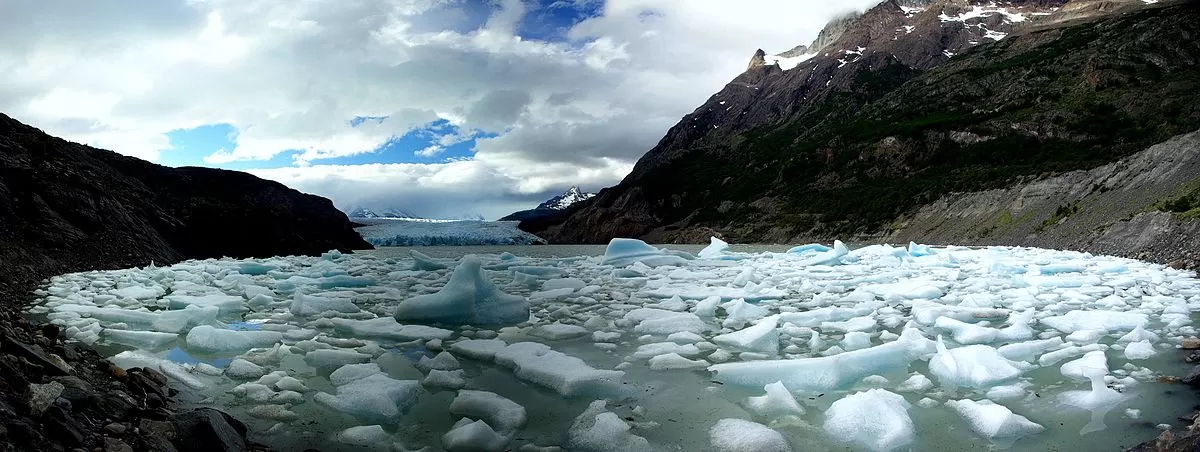
Image Credit : Wikimedia Commons (free license)
QUICK FACTS ON ICEBERGS:
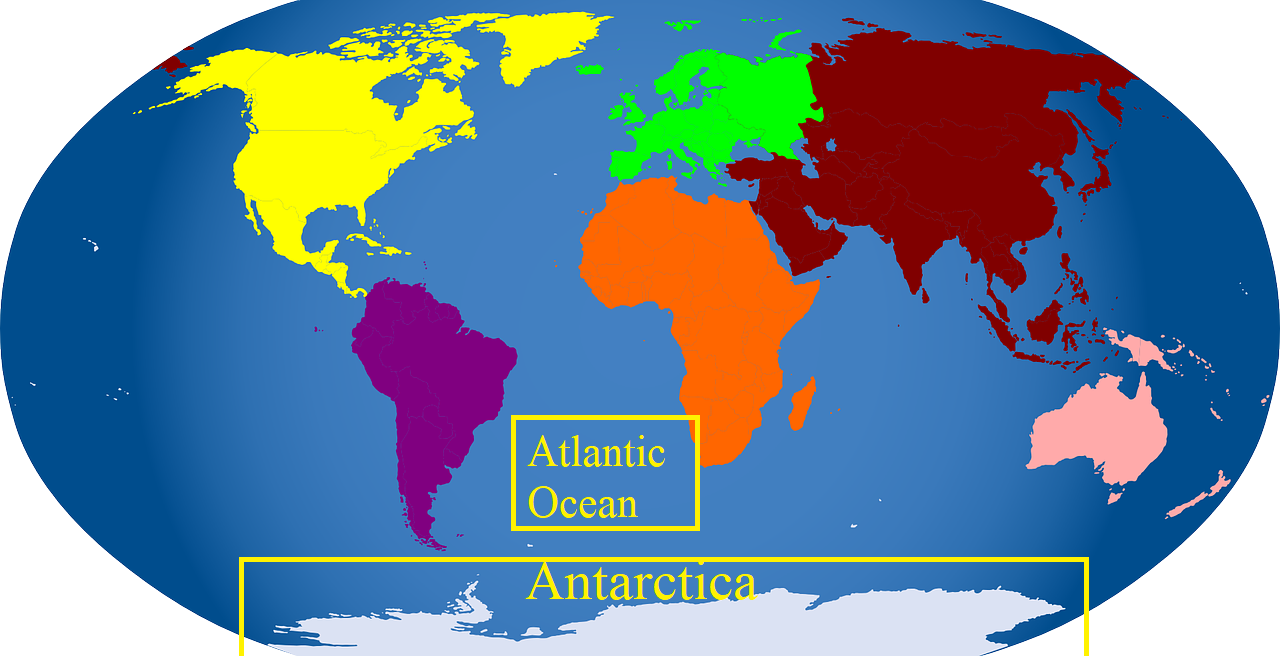
Icebergs are commonly found near Antarctica and in the North Atlantic Ocean near Greenland.
Image credit: by OpenClipart-Vectors from Pixabay (free license)
WHAT IS AN ICEBERG?
Icebergs are pieces of ice that formed on land and float in an ocean or lake. Icebergs come in all shapes and sizes, from ice-cube-sized chunks to ice islands the size of a small country. The term "iceberg" refers to chunks of ice larger than 5 meters (16 feet) across. Smaller icebergs, known as bergy bits and growlers, can be especially dangerous for ships because they are harder to spot. The North Atlantic and the cold waters surrounding Antarctica are home to most of the icebergs on Earth.
HOW DO ICEBERGS FORM AND WHERE DO THEY GO ?
Icebergs form when chunks of ice calve, or break off, from glaciers, ice shelves, or a larger iceberg. Icebergs travel with ocean currents, sometimes smashing up against the shore or getting caught in shallow waters.
When an iceberg reaches warm waters, the new climate attacks it from all sides. On the iceberg surface,
warm air melts snow and ice into pools called melt ponds that can trickle through the iceberg and widen cracks.
At the same time, warm water laps at the iceberg edges, melting the ice and causing chunks of ice to break off.
On the underside, warmer waters melt the iceberg from the bottom up.
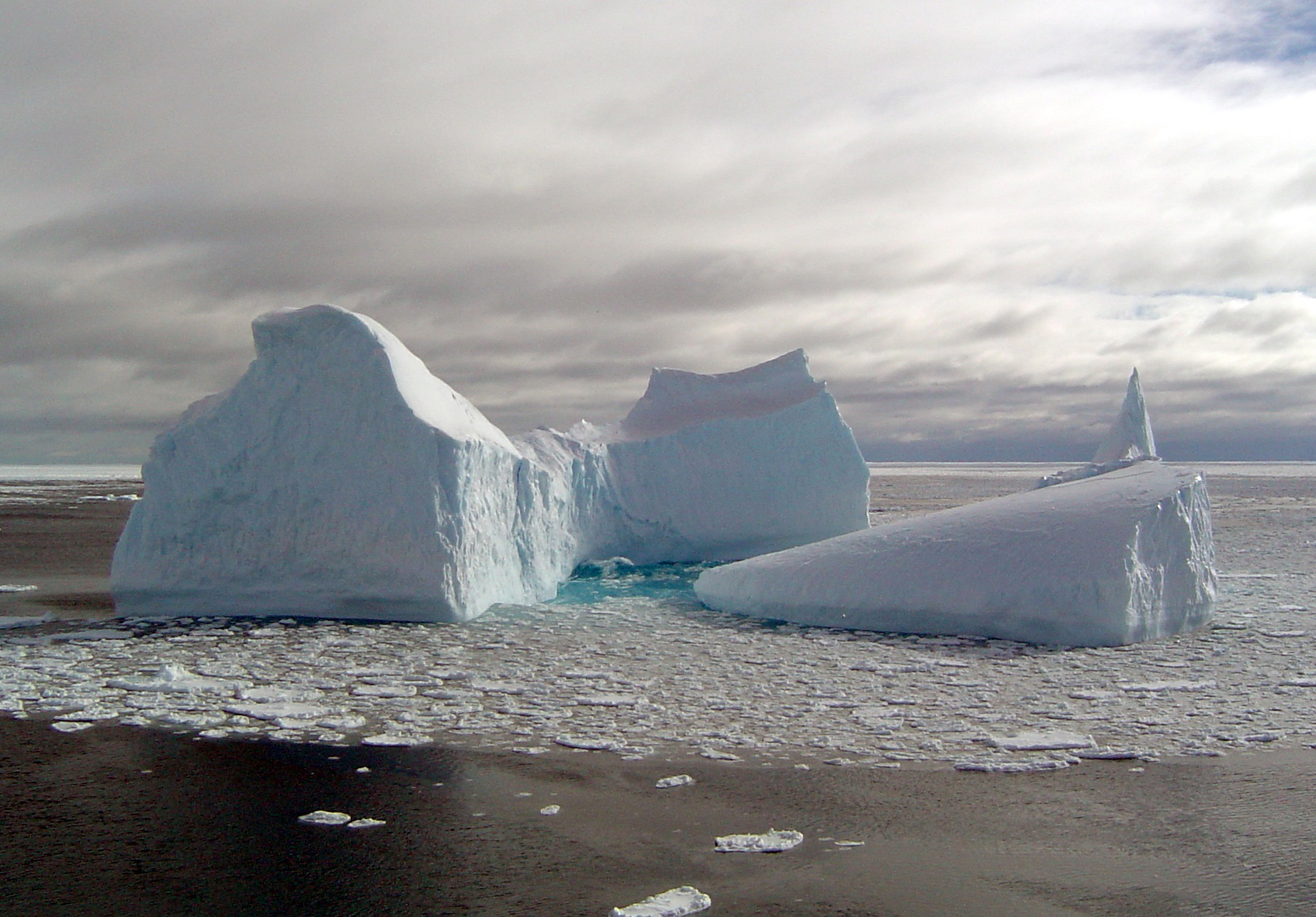
Iceberg near Antarctica, small and chunky. Icebergs can develop into a variety of shapes as they break apart.
Image Credit: Ted Scambos from National Snow & Ice Data Center
WHY ARE ICEBERGS IMPORTANT?
Icebergs pose a danger to ships traversing the North Atlantic and the waters around Antarctica. After the Titanic sank near Newfoundland in 1912, the United States and twelve other countries formed the International Ice Patrol to warn ships of icebergs in the North Atlantic.
The International Ice Patrol uses airplanes and radars to track icebergs that float into major shipping lanes. The U.S. National Ice Center uses satellite data to monitor icebergs near Antarctica. However, it only tracks icebergs larger than 500 square meters (5,400 square feet).
Icebergs can also serve as tools for scientists, who study them to learn more about climate and ocean processes.
WHY DO SCIENTIST STUDY ICEBERGS?
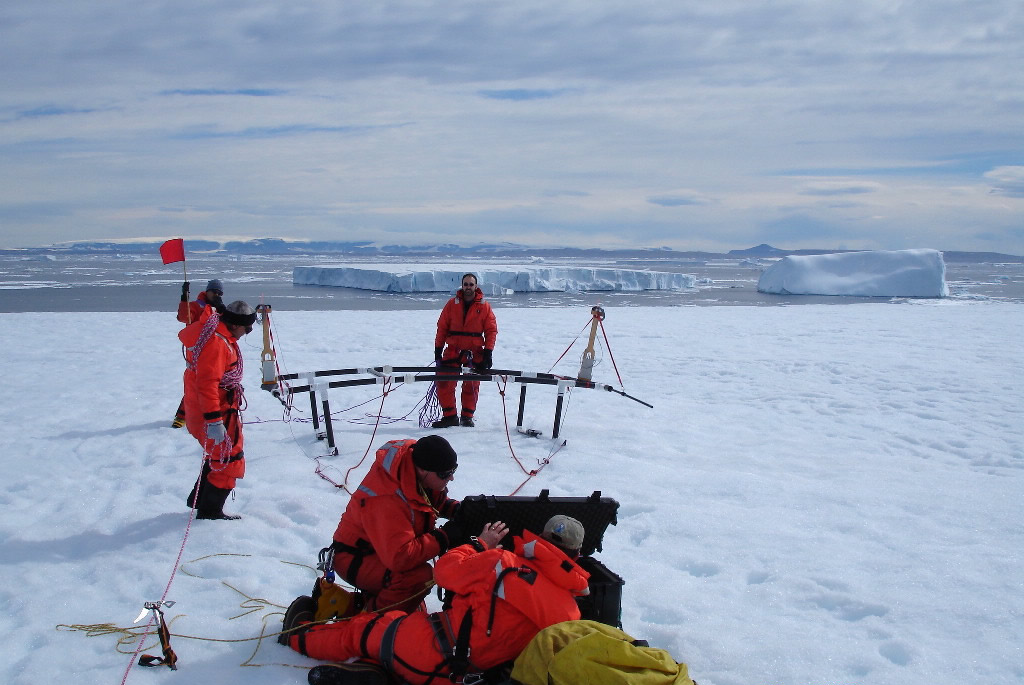
Scientists test their equipment on a small iceberg during the 2006 IceTrek expedition.
Image Credit: Ted Scambos, National Snow & Ice Data Center
Climate scientists study icebergs as they break up for clues to the processes that cause ice shelf collapse. Scientists have noticed that the way icebergs break up when they reach warmer waters mirrors the disintegration of Antarctic ice shelves. By studying the factors that cause icebergs to break up, researchers hope to better understand the influences that lead to ice shelf breakup, and to better predict how ice shelves will respond to a warming climate.
Oceanographers follow icebergs because the cold freshwater they contribute to the sea can influence currents and ocean circulation far away from their origins.
Biologists study icebergs to find out how they influence ocean life. As icebergs melt, they leak nutrients into the ocean around them. Recent studies have shown that the water surrounding icebergs teems with plankton, fish, and other sea life.
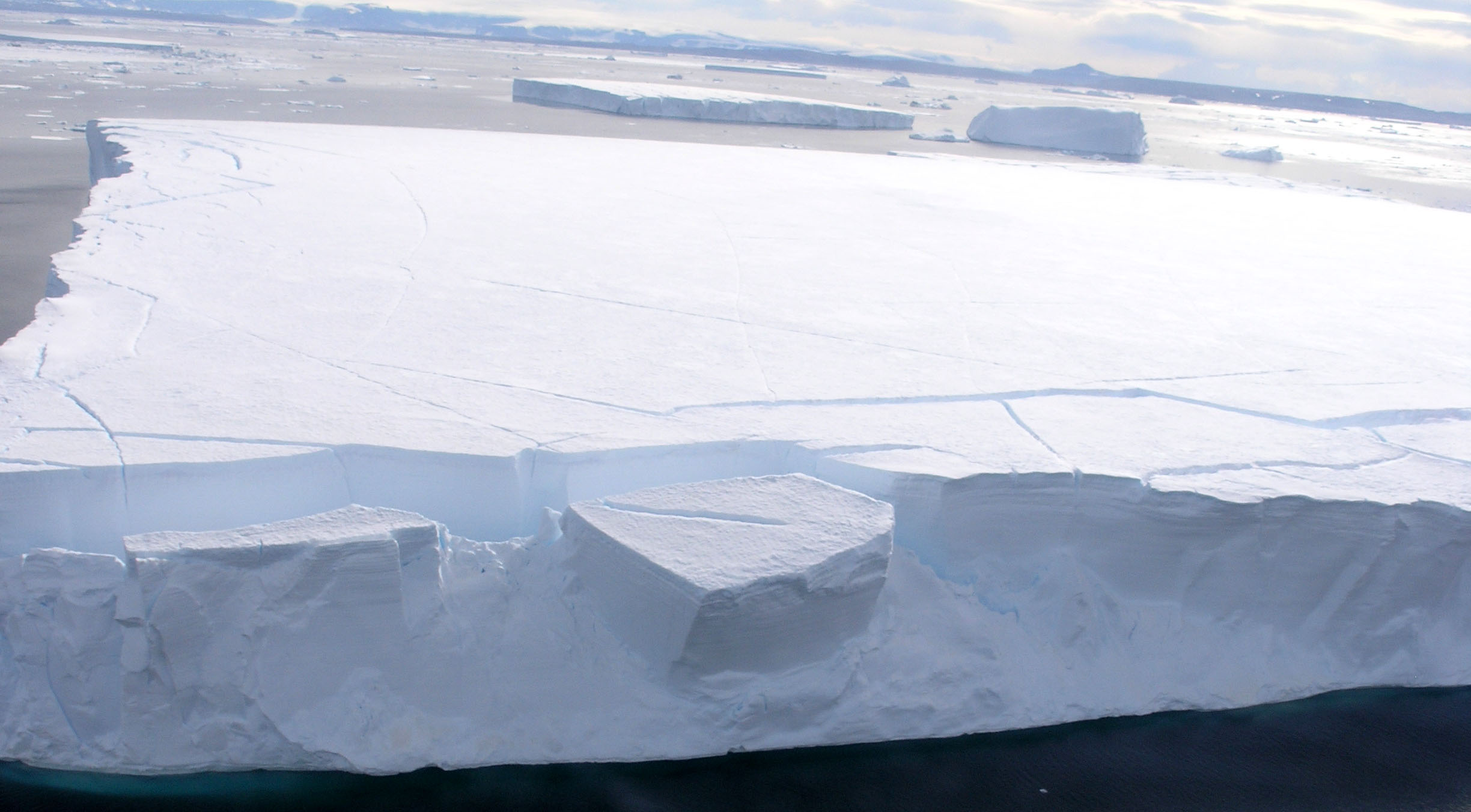
Large tabular icebergs such as the one pictured are common in the waters near Antarctica.
Image Credit: Ted Scambos from National Snow & Ice Data Center
FURTHER RESEARCH:
Outside Resources
International Ice Patrol
Learn more about the history of the International Ice Patrol, the Titanic, and icebergs in the North Atlantic Ocean.
Canadian Ice Service.
Learn how this agency provides the most timely and accurate information about ice in Canada's navigable waters.
U.S. National Ice Center (http://www.natice.noaa.gov).
Learn how this agency, a department of the U.S. Navy, monitors icebergs








